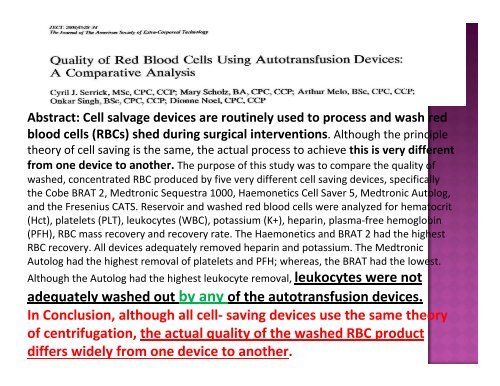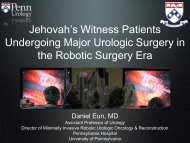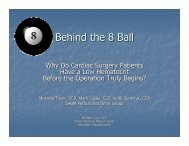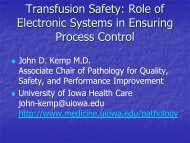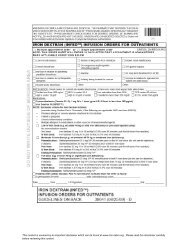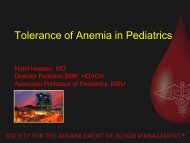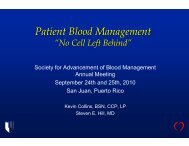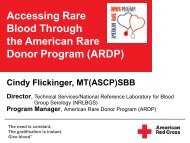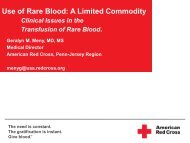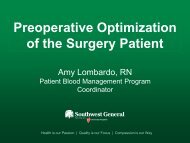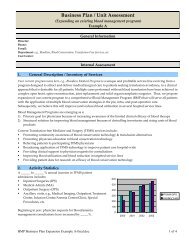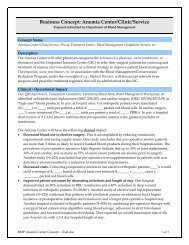SABM James D. Ferguson, Keith A. Samolyk, Victor Carcioppolo ...
SABM James D. Ferguson, Keith A. Samolyk, Victor Carcioppolo ...
SABM James D. Ferguson, Keith A. Samolyk, Victor Carcioppolo ...
Create successful ePaper yourself
Turn your PDF publications into a flip-book with our unique Google optimized e-Paper software.
Abstract: Cell salvage devices are routinely used to process and wash red<br />
blood cells (RBCs) shed during surgical interventions. Although the principle<br />
theory of cell saving is the same, the actual process to achieve this is very different<br />
from one device to another. The purpose of this study was to compare the quality of<br />
washed, concentrated RBC produced by five very different cell saving devices, specifically<br />
the Cobe BRAT 2, Medtronic Sequestra 1000, Haemonetics Cell Saver 5, Medtronic Autolog,<br />
and the Fresenius CATS. Reservoir and washed red blood cells were analyzed for hematocrit<br />
(Hct), platelets (PLT), leukocytes (WBC), potassium (K+), heparin, plasma-free hemoglobin<br />
(PFH), RBC mass recovery and recovery rate. The Haemonetics and BRAT 2 had the highest<br />
RBC recovery. All devices adequately removed heparin and potassium. The Medtronic<br />
Autolog had the highest removal of platelets and PFH; whereas, the BRAT had the lowest.<br />
Although the Autolog had the highest leukocyte removal, leukocytes were not<br />
adequately washed out by any of the autotransfusion devices.<br />
In Conclusion, although all cell- saving devices use the same theory<br />
of centrifugation, the actual quality of the washed RBC product<br />
differs widely from one device to another.


